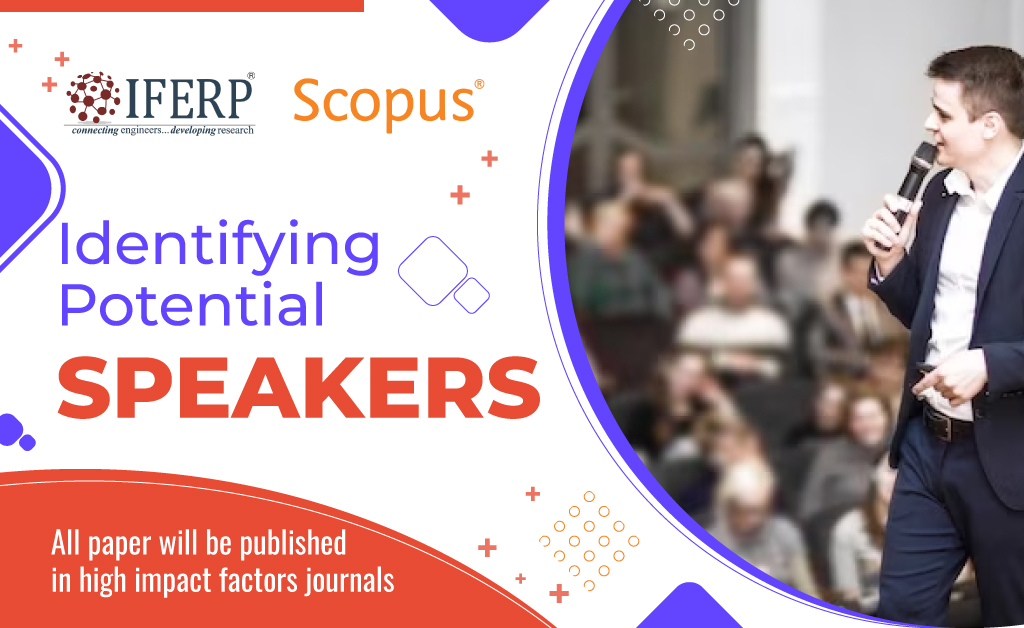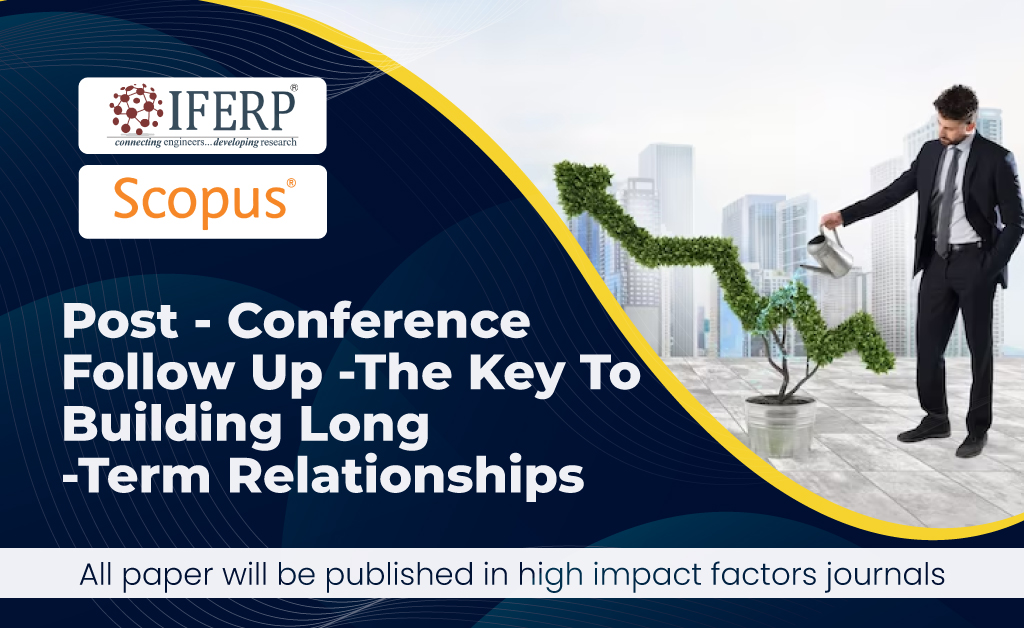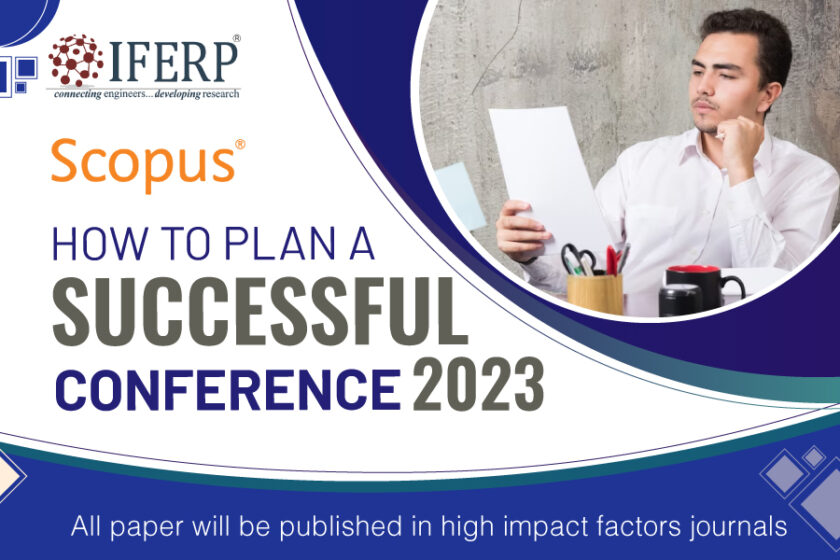Understanding The Purpose & Audience – The Foundation For A Successful International Technology & Engineering Conference
Organizing a successful international technology and engineering conference is a multifaceted process, starting with a clear understanding of the conference’s purpose and audience. This article delves into why these elements are crucial and how they shape all subsequent international conference 2023 planning stages.
- Identifying The Objectives Of The Conference
- Every successful conference begins with a clear understanding of its objectives.
- This clarity guides all other aspects of the conference, from theme selection to marketing strategies.
- The conference’s purpose could range from promoting the latest technological advancements, facilitating networking among professionals, encouraging collaborations, or providing a platform for thought leaders to share their insights.
- The conference could also be a combination of these objectives.
- Understanding the conference’s purpose is not a one-time task; it requires constant revisiting and refining throughout the planning process.
- The conference committee should ensure that every decision aligns with the overarching objectives to maintain focus and ensure the conference’s success.
- Defining The Target Audience
- Identifying the target audience is equally essential as defining the conference’s purpose.
- The target audience primarily depends on the conference’s theme and purpose.
- For an international technology and engineering conference, the audience could include researchers, professionals, educators, policy-makers, and industry leaders.
- Understanding the audience demographic, their interests, and expectations will help tailor the conference content, choose appropriate speakers, and even determine the conference venue and schedule.
- The conference’s marketing and communication strategies should also be designed keeping the audience in mind.
- Balancing Objectives & Audience Expectations
- While the conference’s purpose serves as the guiding light, it’s crucial to balance it with the audience’s expectations.
- The content should not only fulfill the conference’s objectives but also resonate with the attendees.
- Surveys or social media polls can be conducted to understand potential attendees’ interests and expectations.
- These insights can help create an upcoming engineering and technology conference that not only achieves its objectives but also delivers value to its attendees, thus ensuring a successful and well-received event.
Understanding the purpose and audience forms the cornerstone of organizing a successful international technology and engineering conference. These insights will shape the conference’s design and implementation, ensuring it meets its objectives and offers value to its attendees. Therefore, conference organizers should invest time and effort in defining these fundamental elements, as they will significantly contribute to the conference’s success. Find a list of academic conferences set to take place in your field.
- Budgeting & Financial Management – The Key To A Successful International Technology & Engineering Conference
- The successful organization of an international technology and engineering conference requires effective budgeting and financial management.
- This article explores various aspects of conference budgeting, including estimating costs, sources of revenue, contingency planning, and cost-saving strategies to ensure a smooth and successful event.
- Estimating Costs
- The first step in academic conference 2023 budgeting involves identifying and estimating the various costs.
- This could include –
- expenses for venue rental,
- audio-visual equipment,
- speaker fees,
- travel and accommodation expenses for guest speakers,
- catering,
- promotional materials,
- event insurance, and
- website creation and maintenance.
- It’s also essential to factor in miscellaneous expenses for unforeseen circumstances.
- It’s advisable to consider both the best-case and worst-case scenarios to ensure comprehensive budgeting.
- Identifying Revenue Sources
- After estimating the costs, it’s important to identify potential revenue sources.
- The main income for a conference typically comes from registration fees.
- Other sources could include sponsorship deals, exhibition booth rentals, advertisement space in conference publications (or even relevant and highly renowned Scopus journals and publications), and proceeds from selling conference merchandise.
- When setting the registration fees, organizers should consider what the target audience would be willing to pay while ensuring it covers the event’s costs.
- Offering early bird discounts or tiered pricing can help attract more attendees.
- Contingency Planning
- Despite meticulous planning, unforeseen costs can arise. As such, it’s critical to allocate a portion of the budget for contingencies.
- This reserve fund can help cover unexpected expenses without jeopardizing the conference’s quality or financial stability.
- Cost-Saving Strategies
- Employing cost-saving strategies can help manage the budget effectively.
- For instance, seeking sponsorships can offset some costs.
- Also, choosing a venue that provides in-house services like AV equipment or catering can eliminate the need for external vendors, thus reducing costs.
- Other strategies can include negotiating bulk rates for attendee accommodations, using digital platforms for promotions instead of print media, and utilizing volunteers to reduce staffing costs.
- Monitoring & Adjusting The Budget
- Once the budget is set, continuous monitoring is crucial.
- Keeping a close track of all income and expenditures, comparing actual costs with budgeted ones, and making adjustments as necessary will help prevent overspending.
- Effective budgeting and financial management are essential for organizing a successful international technology and engineering conference.
- By accurately estimating costs, identifying revenue sources, planning for contingencies, employing cost-saving strategies, and continuously monitoring the budget, organizers can ensure a financially successful event that achieves its objectives and meets its attendees’ expectations.
- Remember, a well-planned budget is much more than just numbers – it’s a strategy for success.
- International Considerations – An Essential Factor In A Successful Technology & Engineering Conference
- Organizing an international technology and engineering conference presents unique challenges, given the diversity of attendees and presenters.
- A keen understanding of international considerations—such as language barriers, time zone differences, and cultural sensitivities—can ensure a successful and inclusive event.
- Explored in detail below are these aspects and also provided are strategies for effectively managing them.
- Overcoming Language Barriers
- A crucial aspect of organizing an international tech conference (such as a high-level international conference on Artificial Intelligence and Machine Learning) is managing language differences.
- The conference may attract attendees and speakers from various countries, potentially speaking different languages. English is often the default language for these conferences, but it’s vital to consider the proficiency level of the audience.
- To ensure that everyone can follow the presentations and discussions, conference organizers could provide professional translation services.
- Additionally, providing presentation materials in multiple languages can further enhance comprehension.
- Managing Time Zone Differences
- Time zone differences can be a significant hurdle, particularly if some parts of the conference are virtual.
- When scheduling live-streamed sessions, consider the different time zones of the attendees.
- Offering recorded sessions for later viewing can ensure that attendees (guidance can be offered in a detailed steps for attending international conference 2023 guide) can participate, irrespective of their geographical location.
- Visa & Travel Considerations
- For in-person conferences, travel considerations become crucial.
- Assist participants with information regarding travel visas, local transportation, safety measures, and health advisories.
- Providing this support can make the travel experience smoother for your international attendees.
- Paying attention to international considerations when organizing a technology and engineering conference can create a more inclusive and successful event.
- By addressing language barriers, managing time zone differences, respecting cultural sensitivities, and assisting with travel logistics, organizers can ensure that all attendees—regardless of their geographical location or cultural background—feel welcomed and valued.
- After all, the strength of an international conference lies in its diversity and the global collaboration it fosters.
- Sourcing Keynote & Guest Speakers – A Crucial Aspect Of A Successful International Technology & Engineering Conference
- The selection of keynote and guest speakers is a critical aspect of organizing a successful international technology and engineering conference.
- The right speakers can draw attendees, stimulate engaging discussions, and leave a lasting impression.
- Explored below are strategies for sourcing influential speakers and securing their participation.

- Identifying Potential Speakers
- Start by identifying potential speakers who align with the conference’s theme and objectives.
- These could be thought leaders, innovators, researchers, or industry professionals with significant contributions to the field of technology and engineering.
- Keep diversity in mind—aim for a range of speakers in terms of geographical location, gender, and areas of expertise.
- Assessing Speaker Appeal
- While a speaker’s professional reputation and contributions to the field are essential, their appeal to your target audience is also crucial.
- Review past speaking engagements, evaluate their presentation style, and consider their ability to captivate and engage an audience.
- Approaching Speakers
- Once you have identified potential speakers, the next step is to approach them.
- Begin by sending a formal invitation outlining the conference’s purpose, the proposed topic for their talk, and how their participation would add value.
- Tailoring the invitation to each speaker, and showing familiarity with their work, can enhance the likelihood of a positive response.
- Providing Speaker Support
- Offering comprehensive support to your speakers can also enhance your conference’s appeal.
- This could include assistance with travel and accommodation, clarity on what expenses will be covered, provision of presentation equipment, and clear communication of the schedule and expectations (such as offering assistance with high-level abstract submission endeavors).
- Speaker Contracts
- In some cases, you may need to negotiate a speaker contract, particularly for high-profile speakers.
- The contract should clearly state the speaker’s responsibilities, payment terms, and any other expectations.
- Always seek legal advice when dealing with contracts.
- Balancing Big Names & Emerging Voices
- While renowned speakers can draw attendees, it’s also important to give a platform to emerging voices in the field.
- Balancing big-name speakers with lesser-known but promising professionals can add depth and variety to your conference program.
- Sourcing and securing the right keynote and guest speakers is a significant factor in the success of an international technology and engineering conference.
- By carefully identifying, approaching, and supporting potential speakers, conference organizers can build a compelling program that not only attracts attendees but also stimulates thought-provoking discussions and leaves a lasting impression.
- Remember, a diverse, engaging, and knowledgeable group of speakers can make your conference a landmark event in the field of technology and engineering.

- Post-Conference Follow-Up – The Key To Building Long-Term Relationships
- The end of a successful international technology and engineering conference doesn’t signify the end of the event management process.
- The post-conference follow-up is an essential aspect that helps in building long-term relationships with the participants, speakers, sponsors, and all stakeholders involved.
- Highlighted below is the significance of post-conference follow-up and effective strategies to implement it.
- Evaluating The Conference
- One of the first steps in post-conference follow-up is evaluating the conference.
- Collect feedback from attendees, speakers, sponsors, and even volunteers to understand what worked well and where improvements can be made for future events.
- This can be carried out through online surveys, emails, or social media polls.
- Acknowledging Participants & Stakeholders
- Take the time to send personalized thank you notes to all who contributed to the conference’s success.
- This includes –
- attendees,
- speakers,
- sponsors,
- vendors, and
- volunteers.
- Recognizing their contribution not only shows your appreciation but can also strengthen relationships for future events.
- Sharing Conference Highlights
- Sharing conference highlights is another important part of post-conference follow-up.
- This could involve sharing photos, videos, key takeaways, or presentation slides on your website or social media platforms.
- For those who couldn’t attend the conference, this provides a glimpse into what they missed and may encourage them to attend future events.
- Following Up On Commitments
- If there were commitments made during the conference—such as sending additional information, addressing specific queries, or providing certificates—ensure these are fulfilled promptly.
- Engaging Attendees Post-Conference
- Keep the engagement alive even after the conference has ended.
- This could be through online discussions, webinars, or follow-up events.
- This not only helps in sustaining the interest of the participants but can also foster a community around your conference.
- Planning For The Next Event
- Based on the feedback acquired and lessons learned from the conference, start planning for the next event.
- This could involve setting a date, securing a venue, identifying potential speakers, or initiating sponsorship deals.
- Informing previous attendees about the next event keeps them in the loop and paves the way for their future participation.
- Post-conference follow-up is an integral part of organizing a successful international technology and engineering conference.
- By effectively evaluating the event, acknowledging contributors, sharing highlights, fulfilling commitments, and engaging attendees post-conference, organizers can help build long-term connections that not only contribute to the success of future conferences but also foster a vibrant community within the technology and engineering sector.
- Remember, the end of a conference is just the beginning of a conversation and a relationship that can continue to grow.
- Effective Marketing Strategies For An International Technology & Engineering Conference
- Organizing an international technology and engineering conference is a significant undertaking.
- However, even the most meticulously planned event can falter without an effective marketing strategy.
- Delved into below are the various marketing strategies that can elevate the visibility of your conference, attract diverse attendees, and contribute to the event’s overall success.
- Understanding Your Target Audience
- Before implementing any marketing strategies, it’s essential to understand your target audience.
- Identify who would be interested in your conference: researchers, engineers, industry professionals, academics, or students.
- Understanding their interests, preferences, and communication habits will guide the development of an effective marketing strategy.
- Leveraging Digital Marketing
- Digital marketing platforms can offer cost-effective and far-reaching marketing solutions.
- A dedicated conference website, coupled with social media marketing, email campaigns, and SEO (search engine optimization), can significantly enhance your conference’s visibility.
- Networking & Partnerships
- Forming partnerships with relevant organizations, universities, or industry bodies can also be a powerful marketing strategy.
- These partners can help spread the word about your conference within their networks, leading to a broader reach.
- Engaging Speakers As Ambassadors
- Your keynote and guest speakers are not just contributors to your conference but can also act as ambassadors.
- Encourage them to share information about the conference with their professional networks, which can help attract more attendees.
- Early Bird Discounts & Special Offers
- Incentives such as early bird discounts or group registration offers can stimulate prompt registrations.
- Furthermore, special offers for students or professionals from developing countries can also attract a diverse audience.
- Effective marketing is pivotal for the success of an international technology and engineering conference.
- By understanding your target audience, building a strong conference brand, leveraging digital marketing, networking and forming partnerships, engaging your speakers as ambassadors, using traditional media, and providing attractive offers, you can ensure that your conference reaches the right people, stands out from the crowd, and meets its objectives.
- Remember, an effective marketing strategy is as essential to your conference’s success as the content and organization of the event itself.


